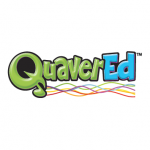How to Start Incorporating it in Your Classroom
***
When children begin Pre-K, they are showing up with unique lived experiences that contribute to creating a one-of-a-kind environment. They come from a variety of backgrounds, cultures, languages, differences in economic situations, among many other variables. According to 26 states that report on children’s home languages, 25.5% of preschool children speak a language other than English at home. (Dual Language Learners and State-Funded Preschool 2019)
As we encounter more children whose home language isn’t English, how do we recognize that their lived experiences bring an enormous amount of cultural wealth and that they have significant linguistic capital? In increasingly diverse communities, how do we prepare our classrooms and our curricula to address and promote the learning of all children?
A dual language learning approach in Pre-K can encompass countless teaching and learning strategies. One strategy is to present content, like read-alouds or songs, in two languages. This will not only support the needs of children whose home language isn’t English but will also greatly benefit the entire classroom.
Let’s dive into 2 major benefits of a dual language learning approach in prekindergarten
Dual Language Learners and Executive Functioning
Learning a second language at a young age sets children up for improved cognitive development. In Challenging Common Myths About Young Dual Language Learners: An Update to the Seminal 2008 Report, Dr. Linda M. Espinosa disputes stigmas surrounding dual language learners and education. She calls attention to the false idea that children who learn more than one language show academic and social delays. Studies show that dual language learners “consistently outperform monolingual children on tasks that require focused attention, inhibitory control, planning and working memory abilities, and mental flexibility” (Espinosa, 2016, p. 13).
Dual Language Learners and SEL Skills
Research has shown that children who speak two languages are “able to make new friends and create strong relationships in their second language—an important personal skill in our increasingly diverse society.” (The benefits of being bilingual 2019)
Effective perspective-taking is a huge benefit of learning more than one language. “Bilingual children have been shown to be better than monolingual children at taking the perspective of a listener into account and picking up on feedback and prompts from their communicative partner, and have a greater level of pragmatic awareness” (Yow & Markman, 2011).
***
In our Best Practice Guides, Quaver Pre-K shares a few tips on how to bring children’s languages and cultures into the classroom. Below are 2 ideas for how to begin to transform your classroom into a dual language learning environment.
Celebration
We all know children love to celebrate. Research what holidays the children in your class might celebrate and find authentic ways to incorporate those in your class. Invite family members to lead these celebrations with experiences like art, food, and storytelling in the home language. Outside of holidays, find ways to connect with the children in your class and their culture. Amplify their culture or language to help build confidence in them and so that the other children can learn about customs they might not learn elsewhere.
Diverse Material
Provide books and music reflective of the minority home cultures of the classroom. Bring in materials, examples, and stories from diverse topics, illustrators, and authors. There are so many great books and lessons about different cultures. Incorporating those into your classroom will convey the message that all cultures are valued. Instead of asking children to assimilate, you are showing them that their culture matters and is welcome.
***
Jamie Young is the Quaver Pre-K Brand Manager. She has previously worked as a content marketer in the music and family media industries.
Resources
The benefits of being bilingual. (2019, March 15). Retrieved April 14, 2021, from https://eclkc.ohs.acf.hhs.gov/publication/benefits-being-bilingual
Diversity, equity, and inclusion. (2021, March 03). Retrieved April 14, 2021, from https://www.quavered.com/diversity-equity-and-inclusion/
Espinosa, L. M., Ph.D. (2016, October 31). PreK-3rd: Challenging common myths about dual language Learners, an update to the SEMINAL 2008 report. Retrieved April 14, 2021, from https://www.fcd-us.org/prek-3rd-challenging-common-myths-about-dual-language-learners-an-update-to-the-seminal-2008-report/
Office of English Language Acquisition, Dual Language Learners and State-Funded Preschool (2019). https://ncela.ed.gov/files/fast_facts/19-0181-DualLanguage-StatePreschool-20191024-508.pdf.
Yow, W. Q., & Markman, E. M. (2011). Young Bilingual Children’s Heightened Sensitivity to Referential Cues. Journal of Cognition and Development, 12(1), 12-31. doi:10.1080/15248372.2011.539524
